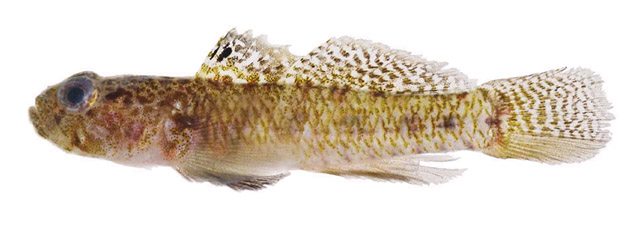| Gobiidae (Gobies), subfamily: Gobiinae |
| 2.8 cm SL (male/unsexed); 2.7 cm SL (female) |
|
demersal; marine; depth range 1 - 23 m |
| Southwest Pacific:: Rapa and possibly Pitcairn Islands. |
|
Diagnosis: Pelvic fins widely separated at base, rays I,5, fifth ray unbranched, distance between bases of inner rays of two fins about equal to base of either fin. One head pore by each posterior nostril, a single anterior interorbital pore, a single posterior interorbital pore, a supraorbital pore behind eye, an infraorbital pore below supraorbital pore behind eye, a lateral canal pore behind infraorbital pore, a terminal lateral-canal pore over preopercular margin, and two preopercular pores. First gill-arch connected by a membrane to inside of gill cover. Gill opening restricted depth of pectoral base. Anterior nostril tubular; posterior nostril a simple pore. No prolonged dorsal rays in males. First dorsal fin with a black spot between first two dorsal spines, half way to distal end of fin; often with spots between second and third and third and fourth dorsal spines as well. Second dorsal-fin rays normally I,8 (Ref. 57078). |
| Collected from rocky areas, often with rubble (Ref. 57078). |
|
Not Evaluated (N.E.) Ref. (130435)
|
| harmless |
Source and more info: www.fishbase.org. For personal, classroom, and other internal use only. Not for publication.

